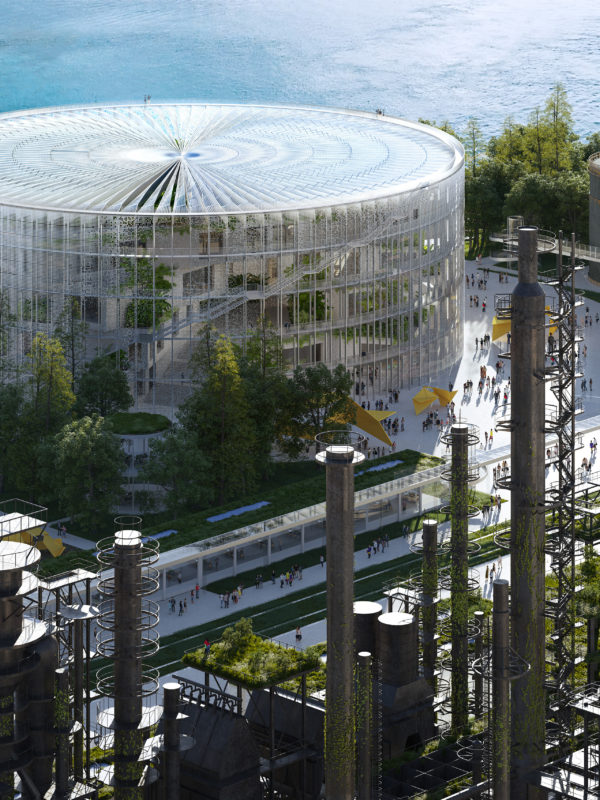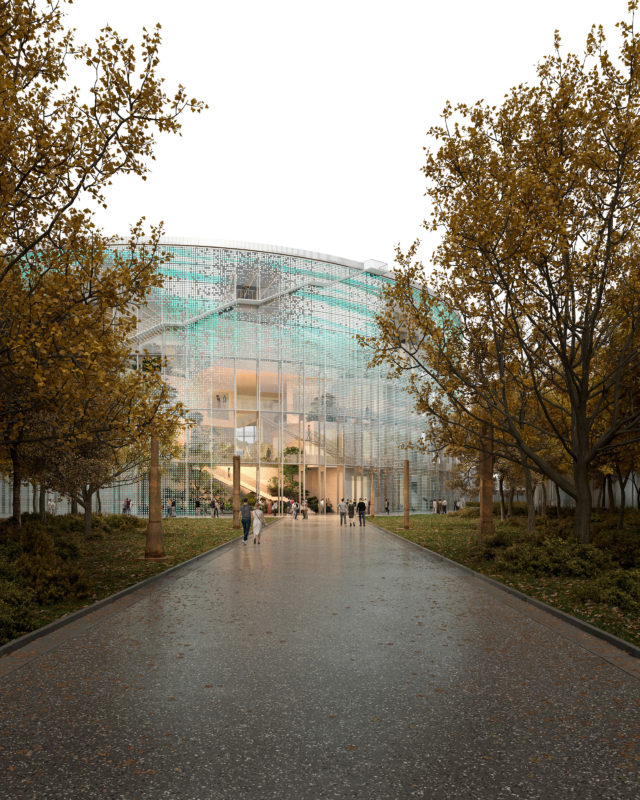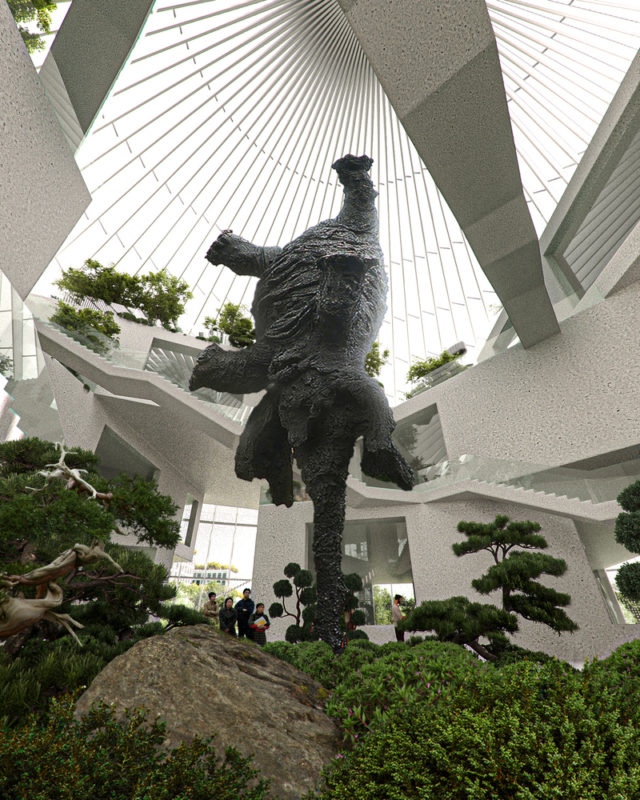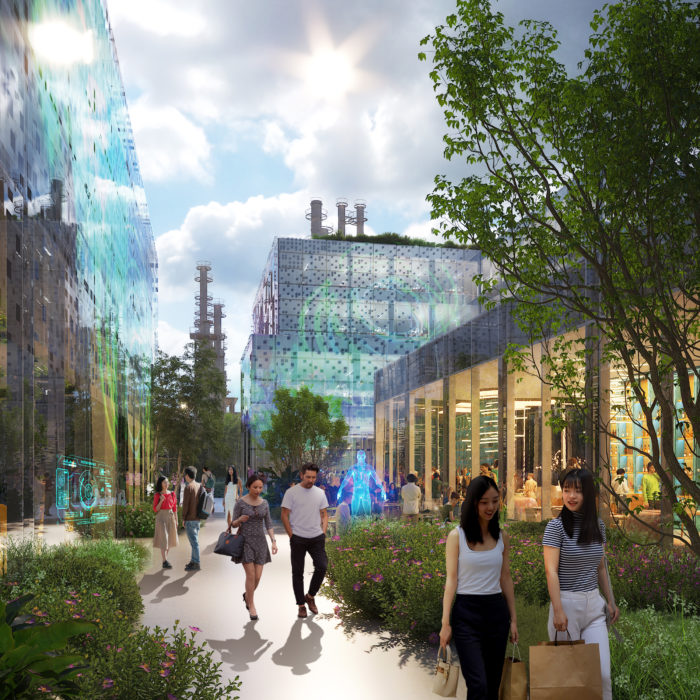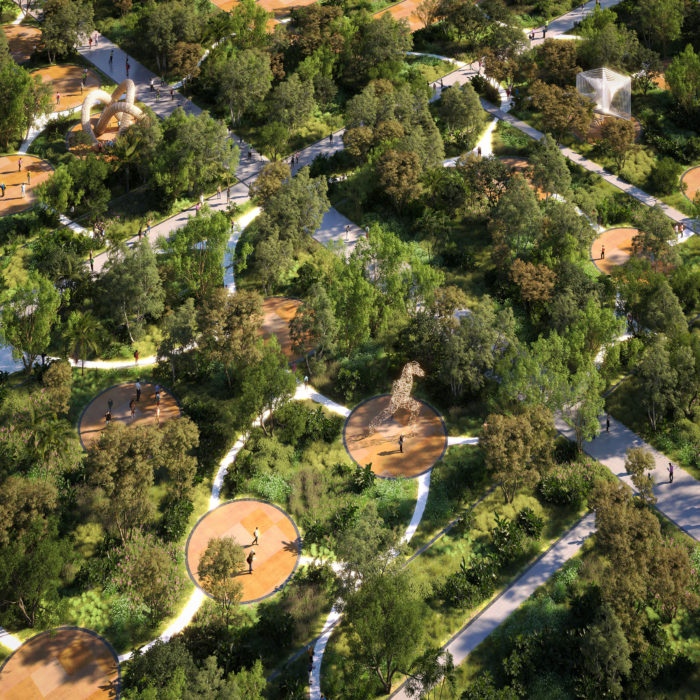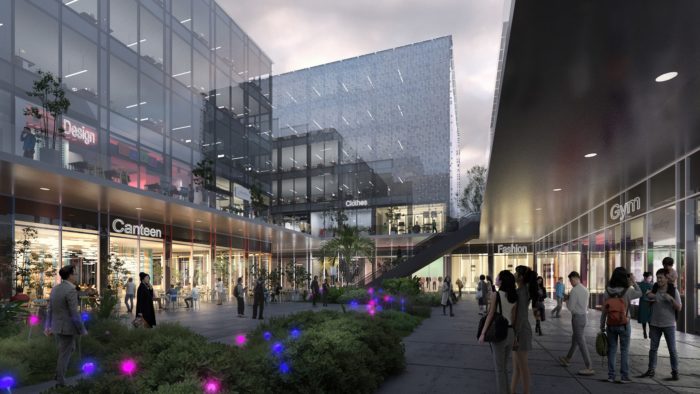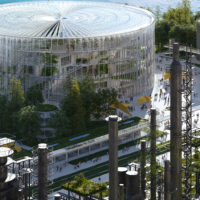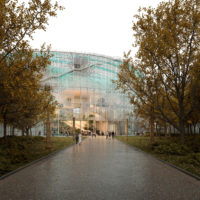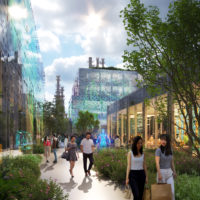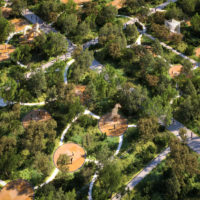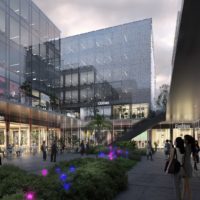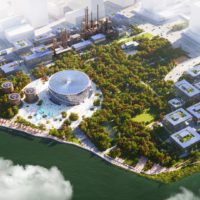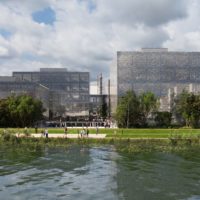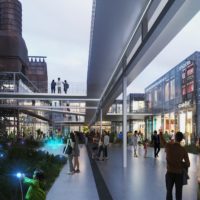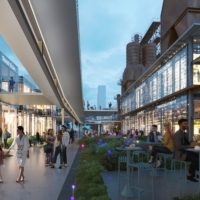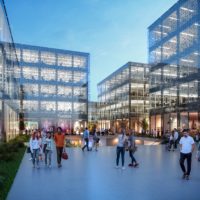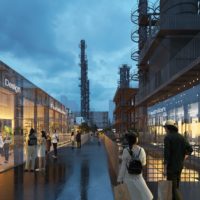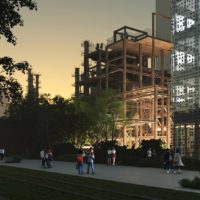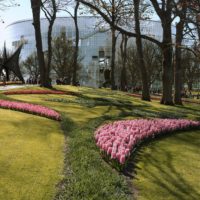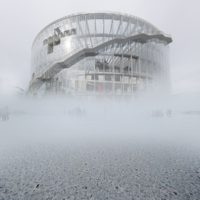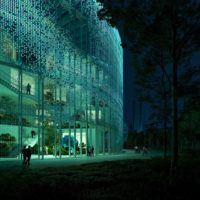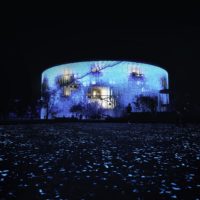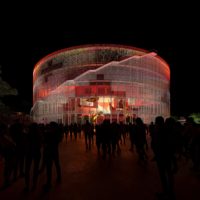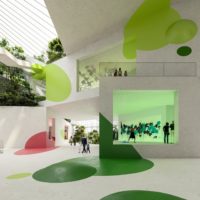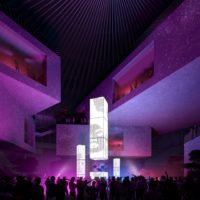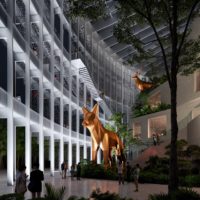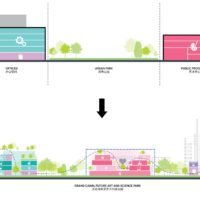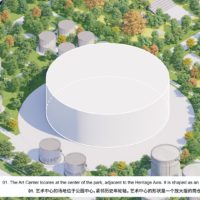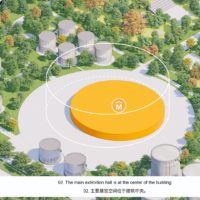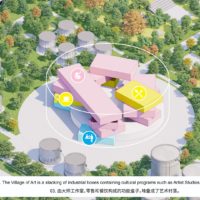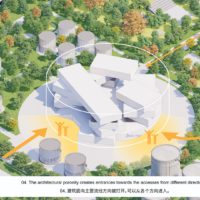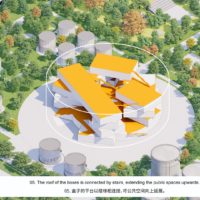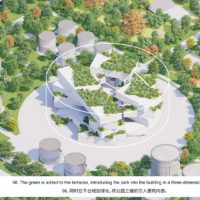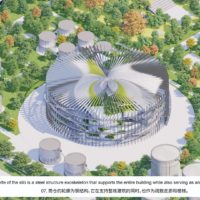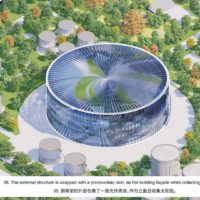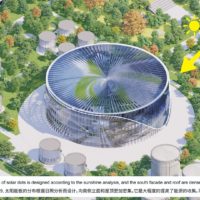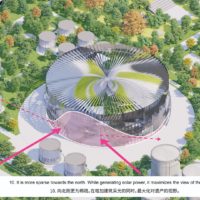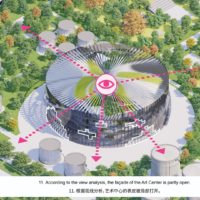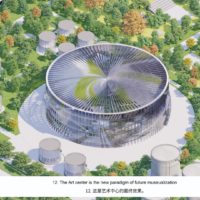MVRDV has been selected to redesign the Hangzhou Oil Refinery Factory Park, an outdated manufacturing site near the southern end of China’s Grand Canal. The proposal revolves around a striking science and art museum and features workplaces, shops, and a wide range of cultural events in a green setting that incorporates relics from the past.
The Grand Canal, the longest in history and one of the earliest man-made canals in the world, was built partly to improve trade links between southern and northern China. China is currently working to improve the Grand Canal down to its 1,700-kilometer length, changing it from a manufacturing facility into a communal leisure for the millions of people who live beside its banks.
Hangzhou Oil Refinery Factory Transformation
Situated near the canal’s southern end, the city of Hangzhou is home to the 18-hectare Hangzhou Oil Refinery Factory and is hence symbolic of the canal’s development. The plant has been shut down, and most of the buildings on the site have been dismantled, although a few sizable refining structures and oil storage barrels survive.
To ensure the canal’s continued viability, MVRDV, and Openfabric have devised a design that showcases the endless possibilities of industrial-to-cultural conversions. Also, the design extensively uses clean energy sources, exemplifying the shift away from fossil fuels and toward a cleaner, greener energy future.
The Art and Sci-tech Centre is a brand-new museum that serves as the park’s focal point. Its façade is cylindrical, like the silos that initially stood on the site, but it is on an enormous scale. The façade’s simplicity belies the building’s complexity; the cylindrical exhibition hall is partly submerged below ground, and on top of that sits an asymmetrical stack of long, rectangular boxes that house artists’ studios, offices, and retail space. There is a public space within the museum that may be used for shows, substantial exhibits, or other events thanks to the terraces formed by the tops of the boxes, which are linked together by steps and walkways.
The museum’s exterior is transparent so that fresh air can flow inside. As a result, the interior area gets hot and cold apathetically, with modest temperature fluctuations based on the outside temperature. However, it still acts as a thermal barrier to significantly reduce the energy needed to properly regulate the temperatures of the building’s designated spaces inside the boxes.
The building’s front is a crucial design element that helps establish the structure as the park’s centerpiece. At night, the museum’s media façade—an array of LEDs covering the building’s exterior—lights up to attract visitors and promote the exhibitions and events.
The façade also features thousands of tiny solar patches that absorb the sun’s rays and power the lights. These areas comprise a parametrically-designed “solar painting” that considers the solar contact, dominant winds, and most striking views to concentrate photovoltaics in the most optimal locations.
As MVRDV partner Winy Maas puts it, “As a planet, we realize we need to switch on from oil on a big scale. But then the question becomes, what should we do with all this newfound infrastructure? It’s both appealing and thrilling to think of a future in which we’ll be able to erect structures upon what remains of the past. Incorporating historic factory buildings while simultaneously showcasing a brighter, more sustainable future is what we set out to accomplish with this Hangzhou Oil Refinery Factory’s transformation. The ancient “fossils” transform into buzzing beats.”
Existing buildings are preserved and used as workplaces or commercial establishments across the rest of the park. Many collapsed structures are being rebuilt, adopting a more modernized strategy with the same footprint but with glass and photovoltaic panels like those on the museum’s outside.
The master plan is rounded off by a group of brand-new workplaces in the site’s southeastern quadrant. The park can become energy-neutral and contribute to the system by converting all newly constructed building surfaces into energy generators.
“Modular forests are used in the park’s design, with parameters like a species’ commitment to shade the landscape, growing food, or biodiversity algorithmically deciding its positioning in the park’s forest environment,” adds Winy Maas.
Staircases and observation decks offer panoramic views of the park from the towers of the preserved industrial structures. The Hangzhou Oil Refinery Factory’s transformation concept also creates a list of potential functions for the site’s numerous silos, some reimagined versions of the old structures. In contrast, others are simple circles of asphalt in their former locations. These buildings house everything from retail booths to enclosed parks to interactive art installations, keeping the park bustling day and night.
Hangzhou Chenxiang Industrial Heritage Comprehensive Protection and Development Co., Ltd., and Hangzhou Grand Canal Protection Development and Construction Group, are the Hangzhou Oil Refinery Factory renovation project clients.
Similarly, MVRDV has recently won a competition to design the Innovation Park Artificial Intelligence Campus (IPAI) in Heilbronn, Germany, to establish a preeminent hub for studying and advancing AI technology. MVRDV is also in charge of designing EXPO Campus, a bright modern campus with 386 student dorms and a wide variety of shared facilities in Hannover, Germany. Finally, the firm’s first project in Uruguay, a 15-story residential skyscraper, “Ziel” in Montevideo, has also been given the green light for construction.
- © Engram
- © Engram
- © MIR
- © MVRDV
- © MVRDV
- © MIR
- © MVRDV
- © MVRDV
- © MVRDV
- © MVRDV
- © MVRDV
- © MVRDV
- © MVRDV
- © MVRDV
- © MIR
- © MIR
- © Engram
- © MIR
- © Engram
- © Engram
- © Engram
- © Engram
- Mixed park design concept. © MVRDV
- Art and Sci Tech Center Design Steps. © MVRDV
- Art and Sci Tech Center Design Steps. © MVRDV
- Art and Sci Tech Center Design Steps. © MVRDV
- Art and Sci Tech Center Design Steps. © MVRDV
- Art and Sci Tech Center Design Steps. © MVRDV
- Art and Sci Tech Center Design Steps. © MVRDV
- Art and Sci Tech Center Design Steps. © MVRDV
- Art and Sci Tech Center Design Steps. © MVRDV
- Art and Sci Tech Center Design Steps. © MVRDV
- Art and Sci Tech Center Design Steps. © MVRDV
- Art and Sci Tech Center Design Steps. © MVRDV
- Art and Sci Tech Center Design Steps. © MVRDV


